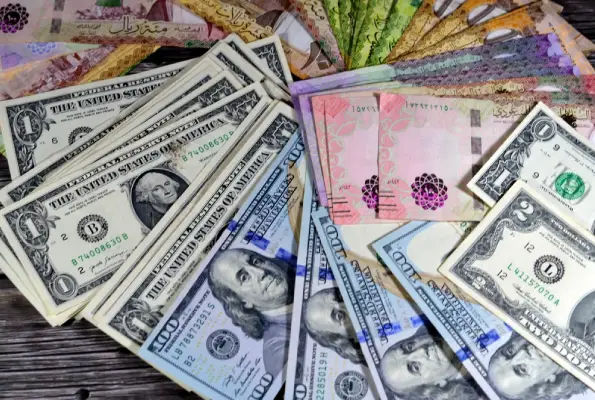In May, Saudi Arabia’s international reserve assets reached SR1.75 trillion ($467.5 billion), marking the highest level in 18 months with an annual 6% increase, according to new data released by the Saudi Central Bank (SAMA). These holdings consist of monetary gold, special drawing rights, the International Monetary Fund’s reserve position, and foreign reserves.
The data for May shows that international currency holdings, which include currency and deposits abroad, as well as investments in foreign securities, made up 95% of the total, amounting to SR1.66 trillion.
During this period, this category also experienced a 6% increase.
Special Drawing Rights (SDRs) made up 4% of the total, totalling SR77.68 billion, and increased by 0.3% during this period.
SDRs were created by the IMF to supplement member countries’ official reserves. They derive their value from a basket of major currencies, including the US dollar, euro, Chinese yuan, Japanese yen, and British pound. SDRs can be exchanged among governments for freely usable currencies when needed.
SDRs provide additional liquidity, stabilise exchange rates, act as a unit of account, and facilitate international trade and financial stability.
The IMF reserve position totalled SR12.72 billion, however, decreased by 14 percent during this period. This category essentially represents the amount a country can draw from the IMF without conditions.
Fitch Ratings announced in March that it had affirmed Saudi Arabia’s long-term foreign-currency issuer default rating at “A+” with a stable outlook.
The agency highlighted that the Kingdom’s position reflects its robust fiscal and external balance sheets. It also noted improvements in governance driven by social and economic reforms, as well as efforts to enhance government institution effectiveness.
Saudi Arabia’s ratings are bolstered by its strong fiscal and external balance sheets, with government debt to gross domestic product and sovereign net foreign assets significantly stronger than the “A” and “AA” medians and substantial fiscal buffers in the form of deposits and other public-sector assets.
The agency stated that the Kingdom of Saudi Arabia benefits from substantial fiscal buffers and has one of the highest reserve coverage ratios among rated sovereigns, at 16.5 months of current external payments.
Fitch anticipates that reserves will decrease to an average of $420 billion by 2024-2025 due to a narrowing current account surplus, offset by investments from entities like the Public Investment Fund.
Sovereign net foreign assets are also projected to remain above 50% of GDP during this period, surpassing the “A” median of 6%.
The IMF praised Saudi Arabia’s “unprecedented economic transformation” in a June report, attributing its success to prudent government policies and effective diversification efforts.
The IMF highlighted strong domestic demand, ongoing financial reforms, and environmental policies as key strengths in Saudi Arabia’s growing economy. After its official visit, the IMF projected that Saudi
Arabia’s GDP growth would accelerate to approximately 4.5% by 2025, stabilising at 3.5% annually in the medium term.
Non-oil growth is expected to reach 3.5% in 2024 and then increase further from 2025 onwards. Despite an anticipated decline in oil output in 2024 due to production cuts, a recovery is expected in 2025.
The IMF emphasised that Saudi Arabia’s diversification efforts are showing positive results and stressed the importance of sustaining non-oil growth momentum, ensuring financial stability, and enhancing business competitiveness.



